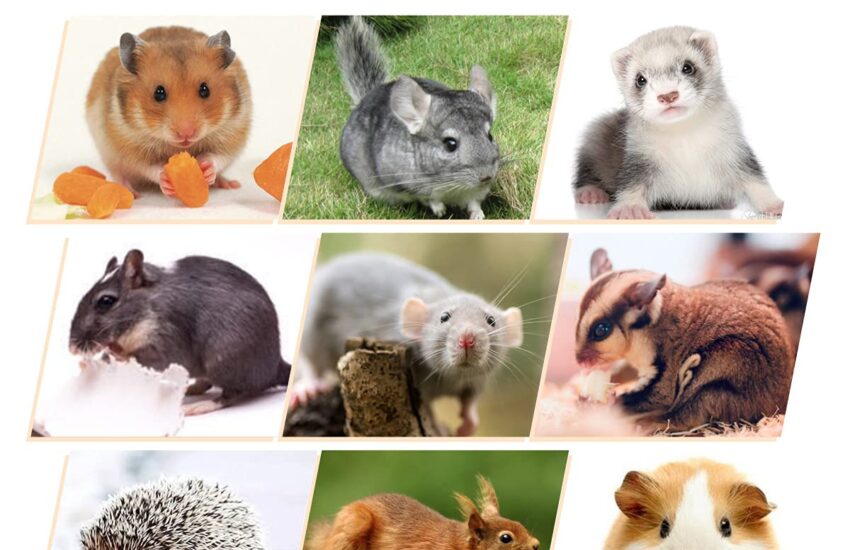Expectations for Hamster Breeds
When it comes to choosing a hamster breed, enthusiasts and new pet owners alike have specific expectations that can shape their experience. Each breed exhibits unique characteristics, behaviors, and care requirements, creating a diverse world of tiny furry companions. In this article, we will explore various hamster breeds and what you can anticipate from them as pets.
Popular Hamster Breeds
Understanding the different hamster breeds is essential for anyone considering bringing one into their home. The most popular breeds include the Syrian hamster, dwarf hamsters, and Roborovski hamsters. Each breed has its unique attributes, so knowing these can help prospective owners make informed decisions.
Syrian Hamsters: The Classic Choice
Syrian hamsters, often referred to as golden hamsters, are the most recognizable species. Known for their docile nature and larger size, **Syrian hamsters** typically weigh 4-7 ounces and can grow up to 6-7 inches long. These pets are great for those looking for a more interactive experience, as they tend to enjoy being handled. They usually have a friendly disposition and can become quite accustomed to human interaction. However, they should be housed alone to prevent territorial disputes.

Dwarf Hamsters: The Small and Social
Dwarf hamsters encompass several breeds, including the Roborovski and Campbell’s dwarf hamsters. Much smaller in size, they weigh around 2-4 ounces and reach lengths of 3-4 inches. **Dwarf hamsters** are renowned for their sociable nature, particularly when housed with same-species companions. They are more active than Syrian hamsters and require more space to wander and explore. While they might be smaller, their lively personality makes them a delightful choice for those seeking a playful pet.

Caring for Different Hamster Breeds
Each hamster breed comes with its specific care requirements. Understanding these nuances will aid potential owners in providing the best environment possible for their small pets. From diet to habitat, each aspect is crucial in ensuring your hamster leads a healthy and happy life.
Feeding Expectations
All hamsters require a balanced diet rich in nutrition. **Hamster food** brands typically offer mixes designed specifically for them. However, owners should be aware of the species’ differences in dietary needs. For example, Syrian hamsters may handle more protein-rich foods than dwarf hamsters, which can be affected by specific dietary restrictions. Alongside their primary food source, fresh vegetables like carrots and leafy greens can be offered as treats, being cautious not to over-supply.
Creating an Ideal Habitat
The right habitat is fundamental for any hamster’s health and wellbeing. Syrian hamsters require larger cages with plenty of room for wheel exercise and burrowing space. In contrast, **dwarf hamsters** may thrive in slightly smaller accommodations, as long as they are enriched with tunnels, toys, and companions to keep them engaged. Bedding types also differ, with some preferring softer options for burrowing.

Behavior and Training of Hamsters
Understanding hamster behavior is crucial in setting realistic expectations for hamster owners. Different breeds exhibit various personality traits, and knowing these will help owners establish a loving and productive relationship with their pet.
Socialization Tips for Syrian Hamsters
Although **Syrian hamsters** can be solitary by nature, they can also build bonds with their owners. Handling should begin when they are young to promote trust. Gently letting them sniff your hand and gradually incorporating short sessions of handling can positively influence their behaviours. Creating a structured interaction schedule will foster engagement and can ease anxiety, resulting in a more relaxed pet.
Encouraging Interaction with Dwarf Hamsters
Dwarf hamsters thrive on social interaction, whether with their human caretakers or other hamsters. Offering them toys that require interaction, such as rings and mazes, will keep them entertained and satisfied. Additionally, understanding signs of playfulness, like running or digging, encourages further interaction. Owners should prioritize space in the habitat for companionship to avoid loneliness.

Health Considerations for Hamsters
Health is a crucial aspect of hamster ownership, and each breed has its predispositions that require attention. Understanding common health risks associated with specific breeds can aid owners in providing proactive and preventive measures tailored to their furry companions.
Common Health Issues in Hamsters
Hamsters can face various health issues, including obesity, dental problems, and skin conditions. Syrian hamsters are particularly susceptible to obesity due to their less active nature. Owners should maintain a healthy diet and enough space for exercise, ensuring they remain fit. Dental issues can lead to painful problems over time, thus requiring regular check-ups to manage potential risks. Engaging pets in regular activity is essential to prevent many health issues.
Regular Veterinary Care
Regular veterinary visits are recommended for all hamster breeds to monitor their health. A small scale of veterinary practices cater to exotic pets, ensuring that hamsters receive specialized care when needed. Routine health check-ups encompass dental assessments and vaccinations, as well as advice on general wellbeing tailored to the specific breed under your care.

Key Takeaways
- Research different hamster breeds to match one that fits your lifestyle.
- Understand unique care requirements for feeding and habitat.
- Foster good communication and build trust through gentle and consistent interaction.
- Stay vigilant about potential health risks and regular veterinary checks.
- Enjoy the companionship of your hamster and create a nurturing environment.
FAQ
1. What is the lifespan of different hamster breeds?
The lifespan of hamsters typically ranges from 2 to 3 years, with Syrian hamsters often living slightly longer than dwarf breeds. Factors such as diet and habitat can significantly affect longevity, emphasizing the importance of comprehensive care in maintaining overall health.
2. Can different breeds of hamsters live together?
Generally, it is not advisable for different hamster breeds to cohabitate. Syrian hamsters are solitary creatures, whereas dwarf hamsters can be social but should be housed with same-species companions. Mixing breeds may lead to territorial disputes and stress.
3. How often should I clean my hamster’s cage?
Hamster cages should be cleaned thoroughly every week, replacing bedding and wiping down surfaces. Spot cleaning should be conducted every few days to ensure a clean living space. Maintaining hygiene leads to a healthier environment, negatively impacting the hamster’s health.
4. Do hamsters need special veterinary care?
Yes, hamsters require regular veterinary check-ups, particularly if they exhibit abnormal behaviours or signs of illness. Some veterinarians specialize in exotic pets, ensuring professionals who understand hamster health can offer assistance.
5. What should I do if my hamster is not eating?
If your hamster is not eating, observe other signs of distress. It may require a veterinary appointment, as lack of appetite can indicate health issues. Ensuring a varied diet and fresh water is crucial, and sometimes introducing new treats can stimulate eating behaviour.
6. Are there any breeds particularly suited for children?
Generally, Syrian hamsters tend to be more suitable for children due to their calmer nature and larger size, making them easier to handle. Early introductions and supervised interactions can help foster a positive relationship between children and their furry companions.
7. What is the best exercise for hamsters?
Providing a sturdy wheel is the most essential exercise tool for hamsters. Syrian hamsters usually prefer larger wheels, while dwarf hamsters benefit from compact options. Additionally, supervised playtime outside the cage in a safe environment can encourage physical activity.
